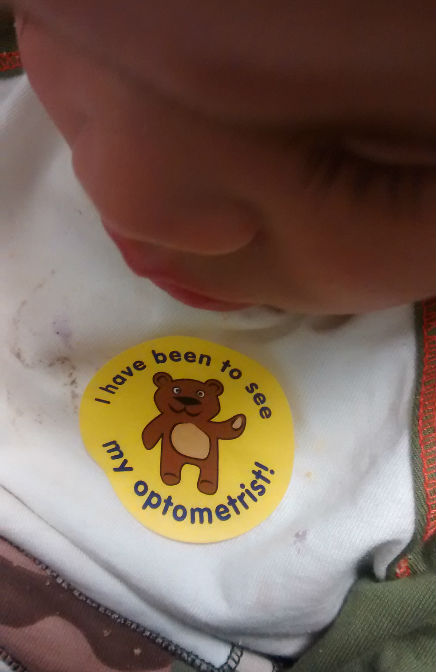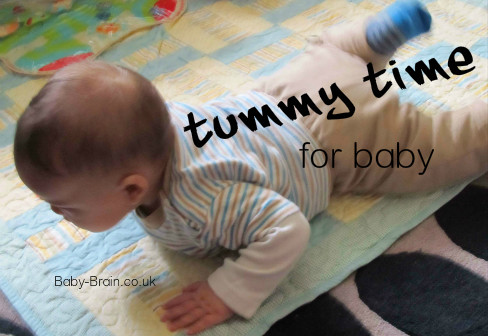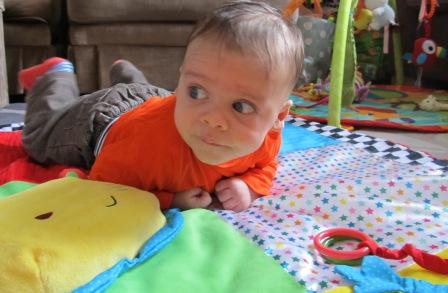…
If you want to try this at home be more careful than me!
What am I talking about? Well I tried to emulate this Baby Water Play idea (piccie to your right ) from a site called “Dirt and Boogers” (written by a “play therapist turned stay at home mom”; see whole article here with some nice pictures of baby playing with the water tray. There is also a range of play ideas from baby to preschool age on the site). This looked like a great way to introduce the Little Lovely (LL) to some sensory play of a different nature as we have never used water during play other than bath time I suppose, but I haven’t introduced any bath toys yet. I didn’t read the instructions properly and I think this activity is for babies who are not sitting yet, or at least is to be done in a non-sitting position.
Anyway, I set up a baking tray with some toys including linky loops, a sippy cup top and rattle (basically things that would glide about on the water), added water and put a plastic sheet under the tray so as not to spill water everywhere, as demonstrated in the picture below.

I sat LL down in front of it (aged 6.5 months) and IMMEDIATELY… WOOSH… the first thing he did was grab the bottom of the tray and tipped it up. The water all spilled out right across the plastic and on to the rug. Oh well, it’s only water.
So this might have been a good sensory experience activity but maybe do as Dirt and Boogers and put baby on their tummy (baby in the original article is 6 months – so similar to LL). Although, I’m not sure if LL wouldn’t have tipped the tray up anyway even if he was on his front.
Maybe I’ll repeat this at some point and see what LL does next time. And maybe I’ll add some balls. I’ve found another water sensory play idea here from Learn with Play at Home (written by a teacher and mother of 2) and they suggest using a high chair tray, which actually might have been a better idea for LL so he couldn’t tip it up, or maybe I could find a heavier or larger water receptacle that he couldn’t tip over. Anyway, try it at home, add some interesting toys/objects to the water that baby can push around and experience the feel and sound of the water. Oh, and at least LL had fun playing with the metal tray, tipping it up and bashing on it with some of his other sensory play objects after his water emptying handiwork was done. He was able experiment with making some nice sounds with the tray – so we got some sensory play after all, just of a different nature to what was planned! Here’s some pictures of him having fun (below).
Safety first! As always, always supervise activities and be careful with with water around your baby. Never leave baby unattended.
See more stuff the Little Lovely and I made and did together: ⇒back to Let’s Make Stuff!

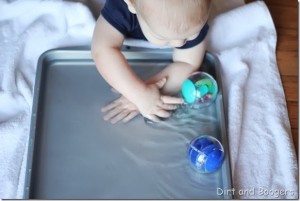
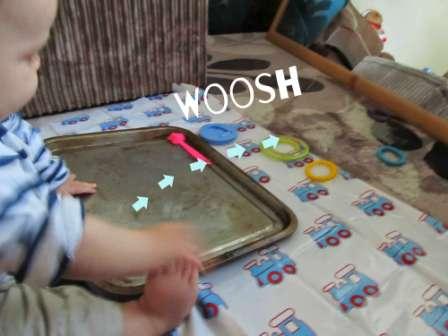
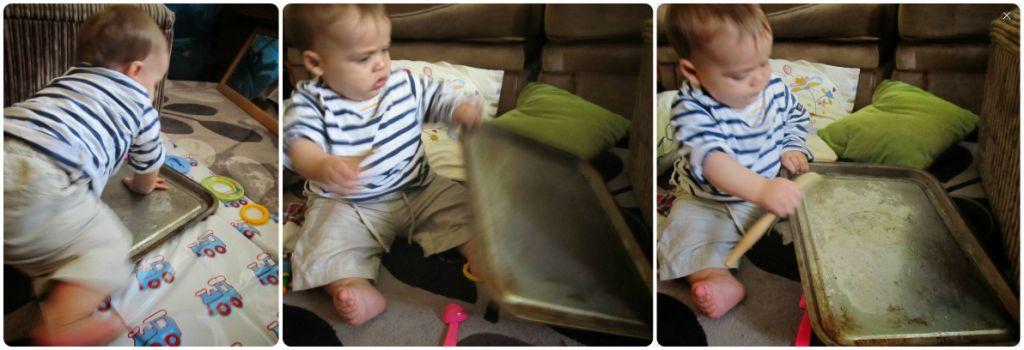
 So the other day we went to the eye doctor
So the other day we went to the eye doctor